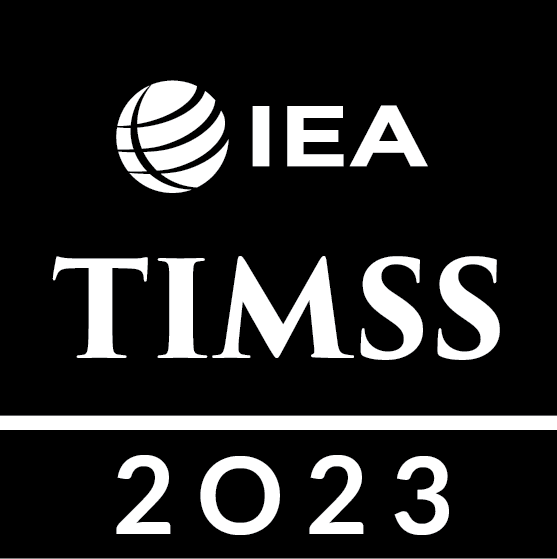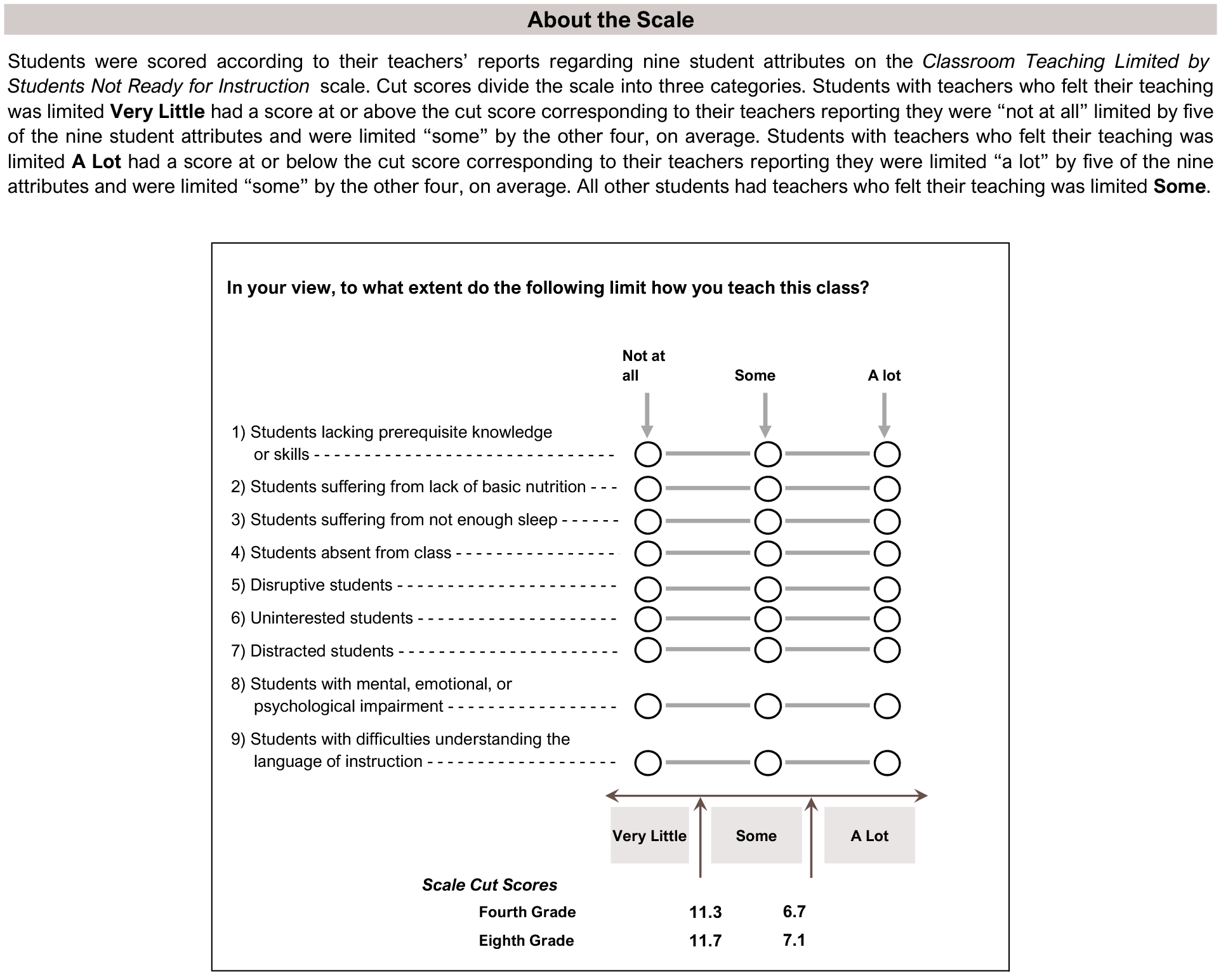Classroom Teaching Limited by Students Not Ready for Instruction – Teachers’ Reports
School Environment
Classroom Teaching Limited by Students Not Ready for Instruction
Students whose teachers reported that their instruction is limited by students’ readiness to learn have lower average achievement in both subjects in both grades. The TIMSS 2023 Classroom Teaching Limited by Students Not Ready for Instruction scale (Exhibit 4.2.16) includes items that asked teachers to report how much different indicators of students’ readiness to learn limited their instruction. Based on these responses, students were classified as having teachers who reported their instruction was limited “very little,” “some,” or “a lot.”
In the fourth grade, about a quarter of students internationally had teachers reporting that their instruction was limited “very little” by students’ readiness to learn (25% in mathematics and 26% in science). Most of the remaining students (68% in mathematics and 67% in science) had teachers reporting their instruction was limited “some,” while a small percentage of students (7% in mathematics and 6% in science) had teachers reporting their instruction was limited “a lot.” In both mathematics and science, fourth-grade students whose teachers reported their instruction being limited “very little” by students’ readiness to learn had the highest average achievement (520 in mathematics and 509 in science), as shown in Exhibits 4.2.17 and 4.2.18, respectively. These students had an advantage in average achievement over students’ whose teachers reported their instruction being limited “some” (20 points in mathematics and 18 points in science) and an even larger advantage over students’ whose teachers reported their instruction being limited “a lot” (39 points in mathematics and 38 points in science).
On average across countries in the eighth grade, about one-fifth of students had teachers reporting their instruction was limited “very little” by students’ readiness to learn (18% in mathematics and 20% in science). Most remaining students had teachers who reported their instruction was limited “some” (73% in mathematics and 71% in science) and a small percentage of students (9% in mathematics and 8% in science) had teachers reporting their instruction was limited “a lot.” Eighth-grade students whose teachers reported their instruction being limited “very little” had the highest average achievement (506 in mathematics and 507 in science– see Exhibits 4.2.19 and 4.2.20). These students had an average achievement advantage of 37 points in mathematics and 32 points in science over students whose teachers reported their instruction was limited “some.” Compared to students whose teachers reported their instruction was limited “a lot,” these students had a 72-point advantage in average mathematics achievement and a 61-point advantage in average science achievement.
Read More
Classroom Teaching Limited by Students Not Ready for Instruction – Teachers’ Reports
Very Little
Some
A Lot
This TIMSS context questionnaire scale was established in 2015 based on the combined response distribution of countries that participated in TIMSS 2015. To provide a point of reference for country comparisons, the scale centerpoint of 10 was located at the mean of the combined distribution. The units of the scale were chosen so that 2 scale score points corresponded to the standard deviation of the distribution.
( ) Standard errors appear in parentheses. Because of rounding some results may appear inconsistent.
An “r” indicates data are available for at least 70% but less than 85% of the students.
An “s” indicates data are available for at least 50% but less than 70% of the students.
An “x” indicates data are available for at least 40% but less than 50% of the students—interpret with caution.
A tilde (~) indicates insufficient data to report result.
Scroll Up

